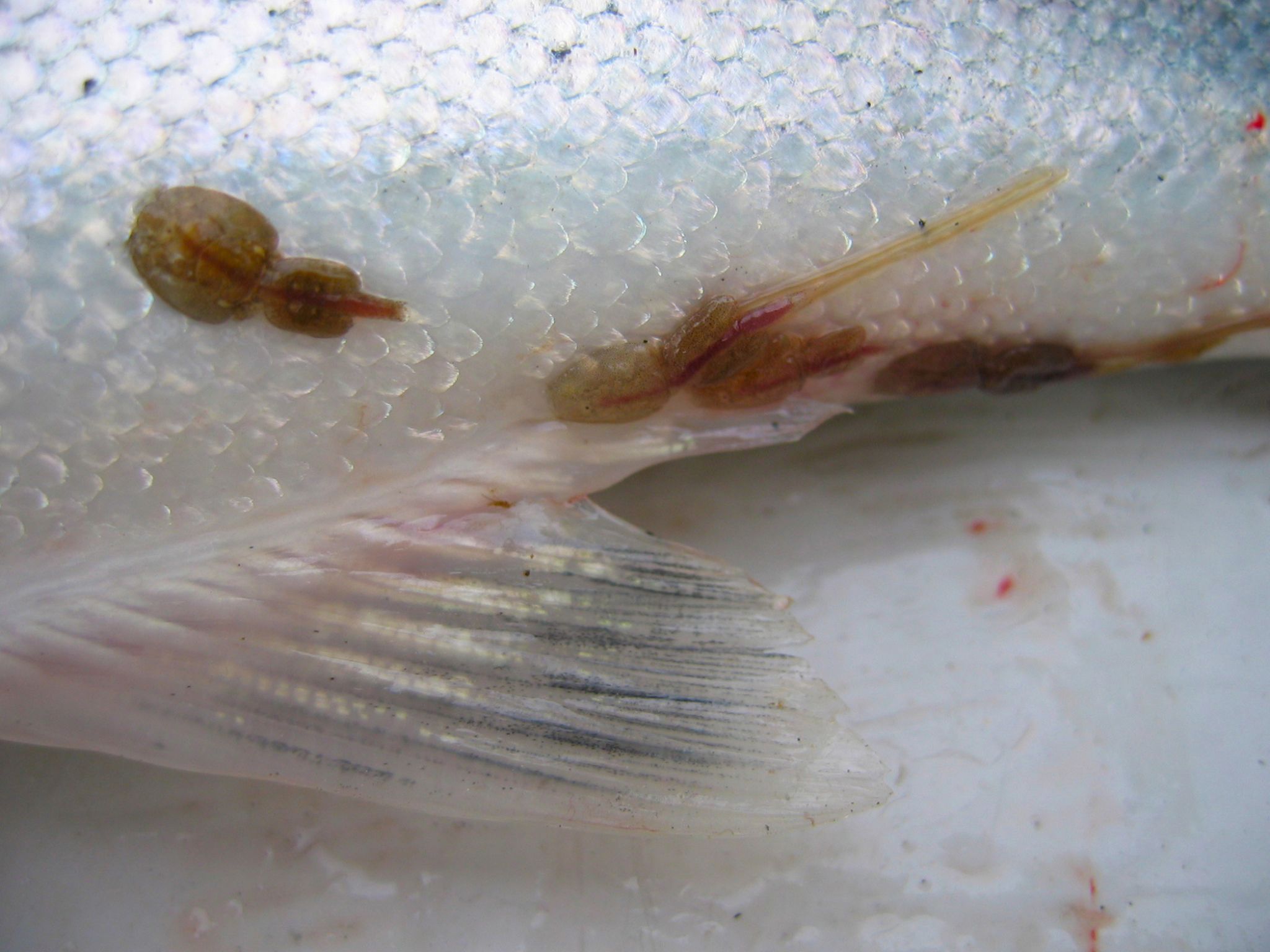BATTLING THE BLIGHT
The key to a successful, viable fish farm
“Sea Lice” are quite literally the dirty words associated with salmon farming. These unpleasant little crustaceans not only virtually eat the fish (and profits) alive, but aquaculture sea lice infestations have caused fish farmers to be blamed for lice spreading to damage Scotland’s wild salmon stocks.
Fortunately, there are many experts working on finding solutions for this blight on the strategic and vital fish farm industry, which globally produces around 52 percent of fish for human consumption (according to the UN’s Food & Agriculture Organisation).
A world-leading company offering a “prevention is better than cure” approach to saving salmon from sea lice is Tom Morrow Tarpaulins – based in the Scottish Highlands.
From its headquarters in Inverness Tom Morrow Tarpaulins has been creating a range of innovative products to satisfy the demands of the salmon production industry – and fish-farming in general – locally and globally, for 35 years.
The key to a successful, viable fish farm is maintaining stock that is clean, fit and healthy – as free as possible from the parasitic lice.
Gary Cunningham, director of Tom Morrow Tarpaulins, says his company has worked tirelessly with aquaculture industry players for years to come up with a range of sea lice prevention solutions that are now routinely employed by the top producers, in most cases customised for individual clients’ needs.
Barrier Screens
The most effective way to keep parasites out of fish cages is to screen them out using impermeable lice barrier tarpaulins or skirts. Not just any old tarpaulins though.
Barrier screens need to be durable, well-constructed, simple to deploy and last long enough to see the salmon stock through several life cycles so that any existing lice infestation is consistently reduced, and any lurking lice hoping to enter the cage are shut out.
“We’ve fine-tuned our sea lice barrier screens over the years and come up with a first-class product with quality components and materials that are rigorously tested and inspected. Everything is hand-made from locally sourced ingredients, so we’ve not had any supply or delivery problems because of Brexit or other political issues,” said Gary.
Best of all, he says, the screens have been proven to work for the firm’s clients. Feedback has been more than positive.
Proof that Tom Morrow Tarpaulins are always improving and innovating comes in the form of their latest product launch – a new freshwater screen which allows the top portion of the tank to be filled with freshwater for feeding and de-lousing.
Quality barrier screens are not Tom Morrow Tarpaulin’s only success story when it comes to serving the needs of the aquaculture industry on any scale. The firm also produces treatment bags and fresh water storage bags, cage padding, jump nets, shade nets, bird nets, polytunnels, tank covers and many other requirements, made bespoke to order.
Cleaner Fish
Current Marine Scotland regulations state that if a fish farm is found to have more than two adult female sea lice per fish during routine monitoring then the Fish Health Inspectorate (FHI) will increase their checks, and if the level grows to six sea lice per fish or more, enforcement notices might be issued.
Similar regulations exist in other parts of the world where fish farming is becoming an increasingly important part of the economy and food supply.
This all means that sea lice prevention and treatment is becoming ever more a hot topic, an important area of research and a field open for inventive technology.
One solution that is currently receiving a lot of attention, in the hope that it will diminish, or ultimately end, the use of medicines or harsh chemicals to treat lice, is the use of cleaner fish.
Certain species of fish such as the Ballan wrasse and lumpfish have proved to be a natural biological treatment for sea lice infestation – they eat the lice on the salmon’s skin.
Cleaner fish in themselves present welfare problems though, both in hatcheries and when cohabiting with salmon on fish farms. They are subject to physical damage, diseases, nutritional difficulties, behaviour aberrations and have complicated breeding habits.
Tom Morrow Tarpaulins have put their minds to the solutions for cleaner fish and come up with a selection of kelp curtains and hides in various configurations. These produce a natural-feeling environment in any cage or tank where cleaner fish can hide, rest and feed., improving their well-being and efficiency.
Striking a Balance
Gary points out that fish farming is increasingly essential in the race to meet the demand for protein rich foods. To foster sustainable, successful fish farming there needs to be a balance between the environmental impact of aquaculture, fish welfare, production and profit.
“We’re proud to have been playing a part in meeting the challenges of the aquaculture industry for many years now. We don’t believe that ‘one size fits all’, so we work as a team alongside our clients to make sure we design, manufacture and deliver products that exactly fit their needs.”
He said Tom Morrow Tarpaulins is committed to supporting fish farmers in overcoming all the problems associated with their enterprise by using the firm’s expertise and ingenuity.
According to Marine Scotland fish farming in Scotland alone is worth at least £885-million to the economy and provides thousands of jobs in remote communities. It’s certainly an industry worth devoting time, effort and energy to developing as the world increases its knowledge and experience of aquaculture, just as we have had to evolve and perfect terrestrial agricultural farming practices over the centuries.
